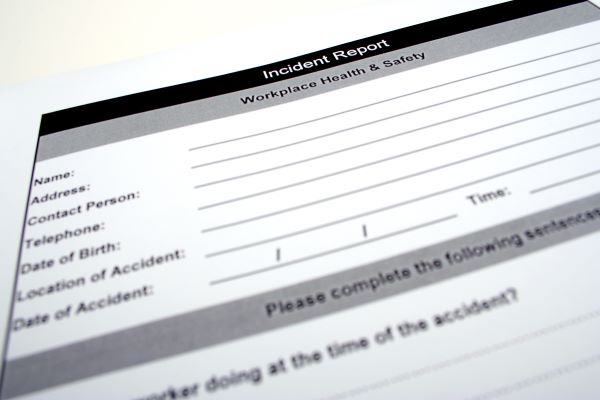In the dynamic landscape of today’s workplaces, workplace incident investigations are essential. Incidents can occur unexpectedly, ranging from minor accidents to more severe crises. To maintain a safe and conducive work environment, organizations must employ effective incident investigation procedures. The goal is not merely only geared to identifying bigger root causes of incidents but also creating or providing preventive measures that in some instances promote a culture of safety and well-being for workers.
The Purpose of Workplace Incident Investigations
Workplace incident investigations serve a dual purpose: to determine the factors contributing to an incident and to prevent similar occurrences in the future. Investigations are not about assigning blame but rather about understanding the chain of events that led to the incident. By uncovering the root causes, organizations can implement targeted corrective actions, thereby mitigating the risk of future incidents.

Key Elements of Effective Workplace Incident Investigations
Immediate Response and Reporting:
When an incident occurs, a swift and organized response is crucial. Employees should be encouraged to report incidents promptly, ensuring that the investigation process begins without delay. This concept really seeks to require a well-defined somewhat reporting system that allows for the quick breakdown of information to the relevant parties.
Forming an Investigation Team:
A dedicated investigation team, comprising individuals with diverse skills and perspectives, should be formed. This team may include representatives from different departments, safety professionals, and individuals directly involved in or affected by the incident. Collaborative efforts enhance the thoroughness of the investigation.
Preserving the Scene:
Preserving the scene of the incident is critical for in attempts of gathering accurate information. The investigation team seeks and tries to ensure that evidence is not tampered or messed with and that the environment is secured to prevent further incidents. This may involve cordoning off the area, taking photographs, and collecting relevant physical evidence.
Interviewing Witnesses and Involved Parties:
The firsthand accounts of individuals involved in or witnessing the incident are invaluable. Conducting interviews allows the investigation team to piece together a comprehensive understanding of the events leading up to the incident. It’s essential to approach interviews with sensitivity, focusing on gathering factual information rather than assigning blame.
Analyzing Data and Documentation:
In addition to witness accounts, the investigation team should analyze relevant data and documentation. This may include surveillance footage, equipment logs, and any other records pertinent to the incident. A thorough examination of these materials aids in establishing a timeline of events and identifying contributing factors.
Root Cause Analysis:
Identifying the root causes of an incident is a pivotal step in the investigation process. Root cause analysis involves probing beyond the surface-level factors to uncover systemic issues that may have contributed to the incident. This analysis helps organizations implement corrective actions that address the fundamental problems.
Reporting and Documentation:
A comprehensive report summarizing the findings of the investigation should be compiled. This mode specific document type should outline the incident’s sequence of events, common types of contributing factors, and, most importantly, recommendations for preventing and “keeping out/filtering out” so to speak, similar incidents in the future. Clear and concise documentation is crucial for organizational learning and improvement.
Implementing Corrective Actions:
The investigation’s true value lies in the proactive implementation of corrective actions. Organizations must take really careful decisive steps to address the identified root problem causes and prevent the recurrence of similar incidents. This may involve updating safety protocols, providing additional training, or making necessary modifications to equipment and facilities.

Challenges in Workplace Incident Investigations
Despite the importance of workplace incident investigations, organizations may encounter challenges in their implementation. Some common challenges include:
Fear of Retaliation:
Employees may hesitate to report incidents or provide honest accounts due to fear of retaliation. Creating a culture that prioritizes safety over blame is crucial in overcoming this challenge.
Insufficient Resources:
Limited resources, both in terms of personnel and technology, can impede the thoroughness of investigations. Organizations should allocate adequate resources to ensure investigations are conducted effectively.
Lack of Training:
Inadequate training in incident investigation techniques can hinder the effectiveness of the process. Training programs should be implemented to equip relevant personnel with the necessary skills.

Workplace incident investigations are integral to fostering a culture of safety, learning, and continuous improvement within organizations. By trying to pick out incidents as opportunities to understand as well as keep info in document to rectify underlying issues, companies can create environments that prioritize the well-being of their employees. Swift response, thorough investigation, and proactive implementation of corrective actions are the keystones of an effective incident investigation process. Ultimately, keeping investing in these processes not only take limits to these risks and liabilities but also contributes to the overall success and sustainability of the organization.
If you think you need a Workplace Incident Investigation, ASG can help. Call us today to discuss your specific case. The call is free and strictly confidential.


